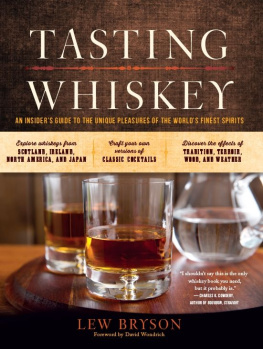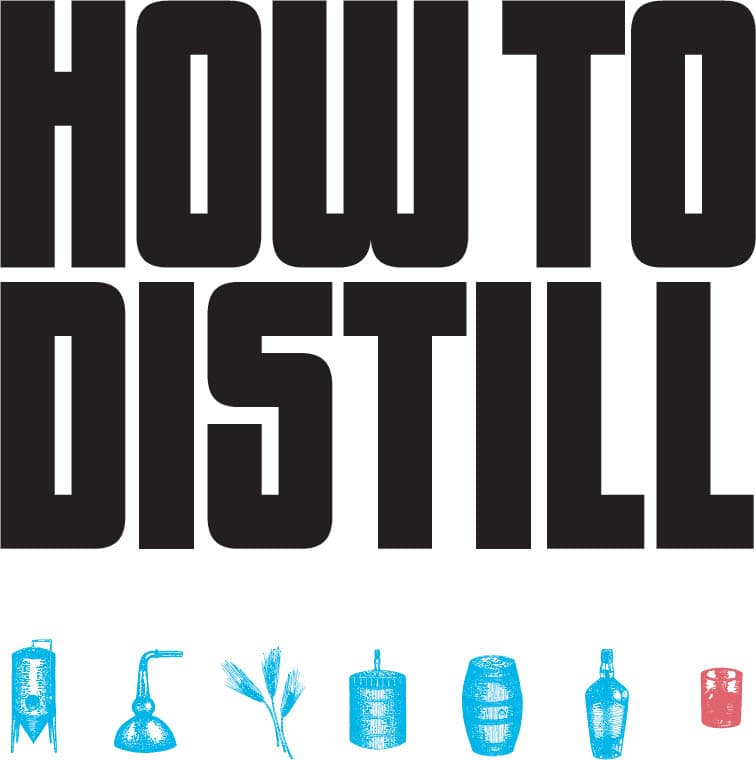Contents
Page List
Guide
Cover
AARON HYDE
A Complete Guide from Still Design and Fermentation through Distilling and Aging Spirits

CONTENTS
INTRODUCTION
This book has one goal and one goal only: to teach you how to distill! Whether youre completely new to the idea of distilling or have distilled a few times but want to learn more, Im hoping this will get you going on your journey.
A lot of folks learn the art of distilling from a friend or family member. Its the kind of skill that is often handed down. For many, distilling was a natural progression from wine making or home brewing. Perhaps you took a different route though; maybe youre an avid whiskey collector who wanted to get your hands dirty and try distilling yourself, or maybe you found a still at an antiques shop or in your grandpappys barn. No matter how youve gotten here, Im glad to welcome you to distilling.
In this book, Ill try to keep distilling as simple as possible and focus on the practical. I will not rely on half-truths, folklore, hearsay, and will share only my opinion on a subject if I think it would be helpful. You may have noticed theres a lot of folklore and backcountry knowhow when it comes to distilling. Some is grounded in technique while other parts are complete baloney. In many instances, youll need to be cautious with information you find. On top of all this, the spirits industry has done a great job of creating mystique around their products. Learning the process of distilling in a straightforward manner will hopefully demystify both confusing secondhand information you may have picked up as well as the mystique of some marketing material from distilleries. I dont want to take away from spirits culture; rather I hope to enhance your appreciation of the craft and point the way towards quality.
Similar to hobbies like home brewing, youll find distilling has both a science and artful components. I may not go into every detail found in scientific texts, but in this book I will highlight a bit of science when necessaryand when I think its relevant to helping you get the best spirit possible. Im also excited to share a taste of the artistic side of the hobby, from customizations to the art of tasting and blending.
Remember that this process isnt like paint by numbers! Creativity is what makes the hobby fun and rewarding. If the distilling process is understood and done well, given a bit of practice and continuous learning, your product will reflect what you put into it. While this book will provide the first steps and a pathway, I encourage you to deviate and experiment, within reason and keeping safety principles in mind. (Personal creativity is what makes whiskeys that are all made in a similar way, using similar ingredients and similar stills, even similar barrels, turn out so different.)
At its core distilling is a simple, beautiful process, and can be done quickly in the case of spirits like vodka and gin, or with years of patience and practice in the case of aged and blended whiskies and rums. I encourage you to read on, and as you go, jump right in and give this rewarding hobby a try!
QUESTIONS ABOUT THE LAW
There are few places in the world where home distilling is legal. Im lucky to live in one of them right now, New Zealand. Im from the United States where it is a federal crime, a felony, to make spirits for consumption. I know plenty of people who have home distilled in the United States, but that doesnt make it any more legal.
As with many things, there may be ways around the legality in your country, such as filing for a distilling license or permitting the still for use to make fuel. You wont find many places that allow you to make alcohol for consumption, even your own, even in your own home. It may seem antiquated since home brewing and wine making are legal in most of the world, but distilling has been deemed a different kettle of fishsometimes under the guise of being a more dangerous process. In my opinion, its no more dangerous than a hobby like woodworking if you take care and understand what youre doing.
In any case, get to know your local laws, and if you decide to take the risk, understand the penalties. Also, in no country is it legal to sell your homemade spirit without some sort of permit. We cant all live somewhere like New Zealand, but we can all be aware of what rules are in place locally, so take some time to understand what is legal and illegal to do in your country when it comes to distilling.
Beyond spirits, the process of distilling is actually used in many ways: to purify water, make oil products from petroleum, remove essential oils from flowers for perfume, to make ethanol fuel, and last but not least, to make spirits for consumption. The still you use and the techniques you learn can be used in some part to do all of the above.
BEFORE YOU BEGIN: THE DISTILLING PROCESS
In this book, the distilling process will be broken down into three to six basic steps youll perform in the following order:
- 1. Mashing
- 2. Fermenting
- 3. Distilling
- 4. Polishing
- 5. Agin
- 6. Blending/Bottling
Ill cover all six of these steps, although all may not be necessary to create your chosen spirit. Can you pick out the three from this list you may not need depending on what spirit youre making?
The steps you may not always need are 1. Mashing, which is used for grains only; 4. Polishing, which is used to remove unwanted off flavors; and 5. Aging, which is used primarily for creating dark spirits. So, if youre looking to follow the easiest path, you can make a spirit like vodka or gin and follow just steps 2, 3, and 6!
My goal is to get you comfortably through all the steps you need to follow to make your chosen spirit. Moonshine? Yep. Gin? You bet. Bourbon? You can do it! Brandy? Lets make it. By the end of this book, youll understand how to distill numerous different spirits and should have something coming out of your still that you can be proud to drink and share.
THE KEY STEPS AND NECESSARY EQUIPMENT
Each chapter of this book will delve deeper into its relevant topic and the standard equipment (minus grains, malts, and yeasts, and so on) you will need for each step, but this brief overview should help you as you begin your journey into making spirits.
STEP 1: MASHING ()
If youre already a home brewer, you know the mashing process is used on grains, which are sometimes referred to as cereals, to provide the brewer (or distiller) with simple sugars that can be eaten by yeast.
















